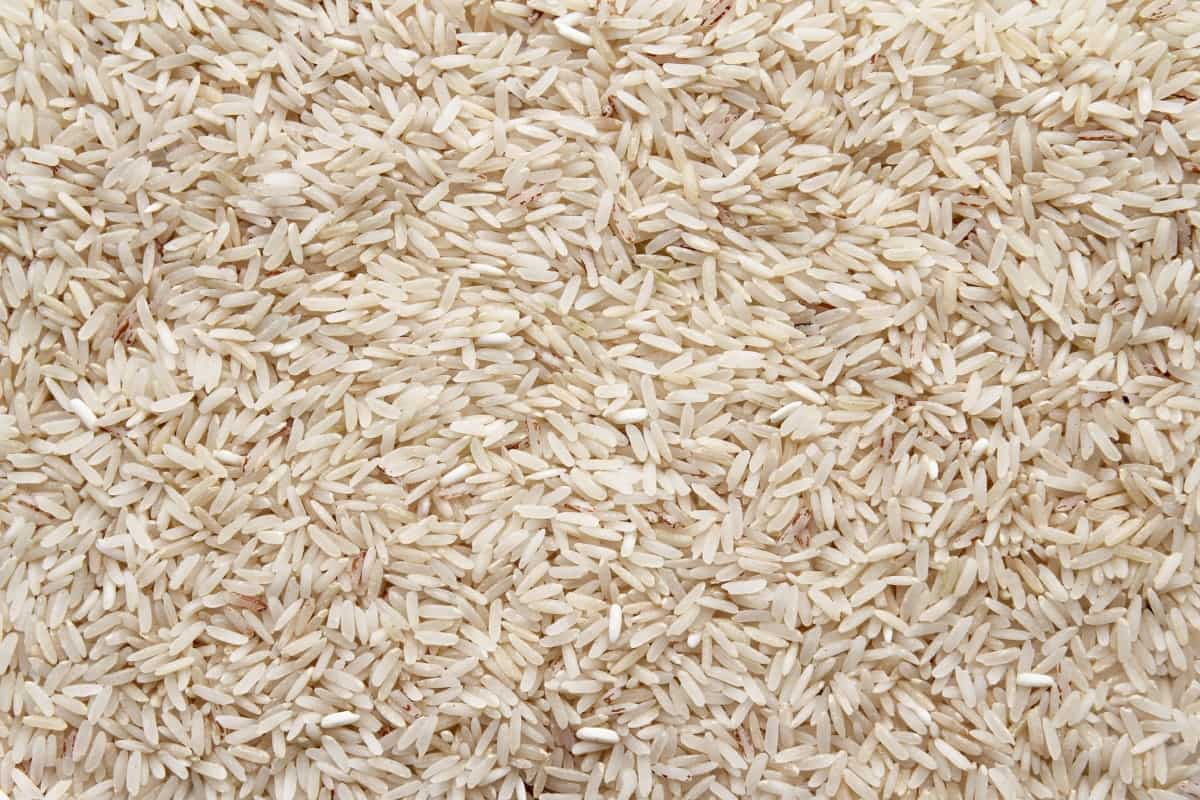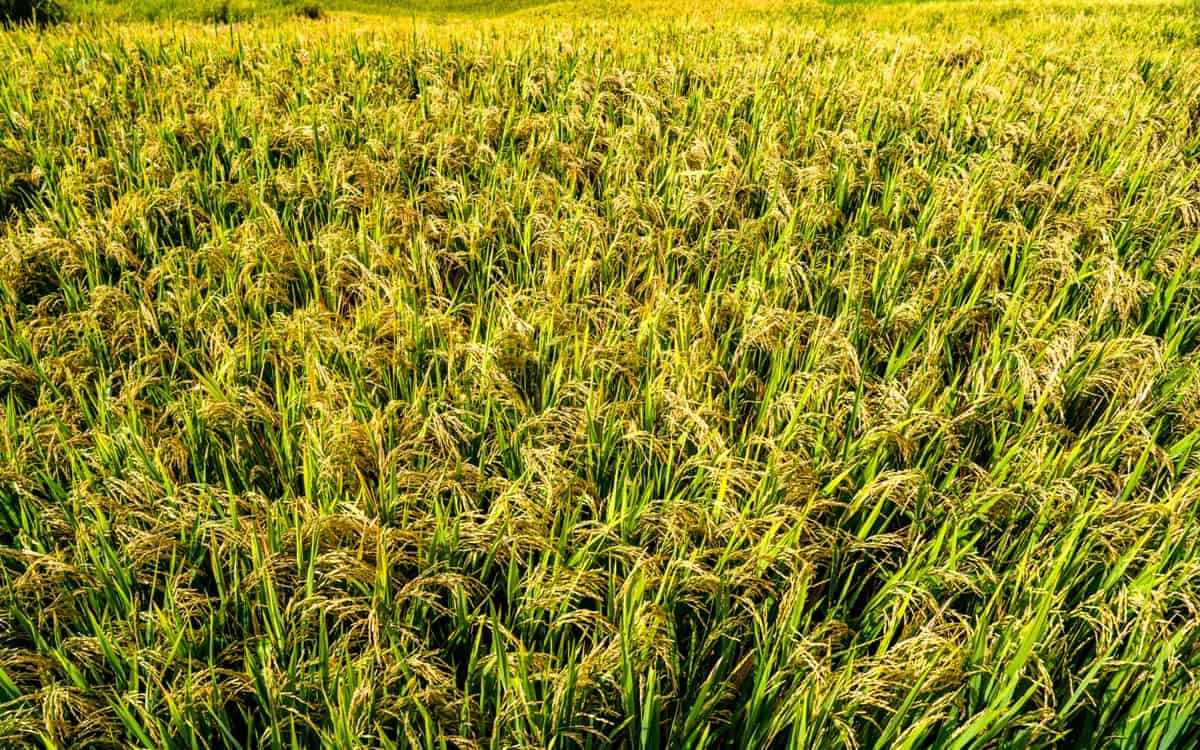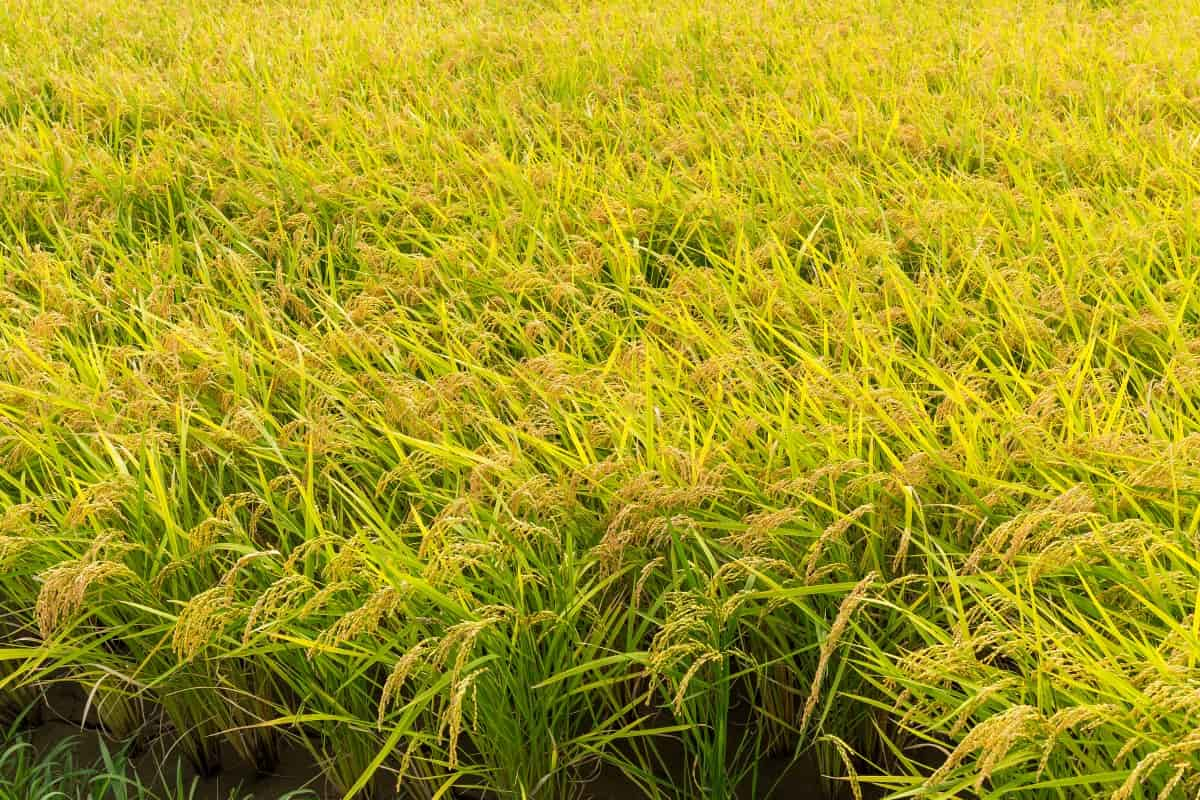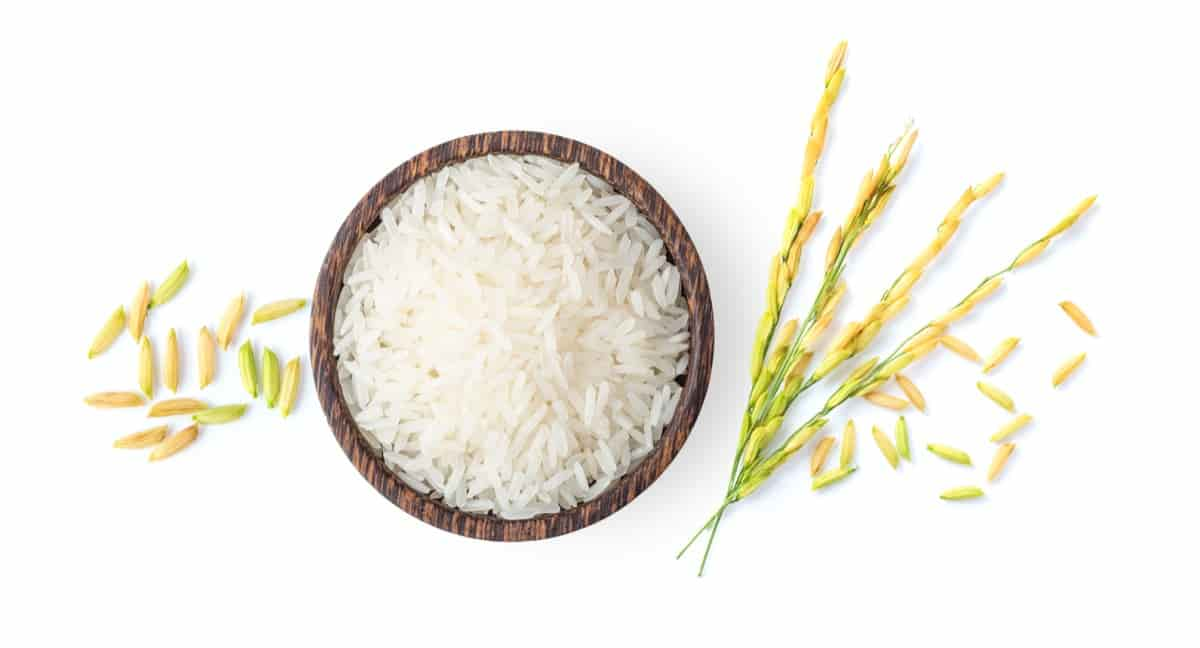Welcome to our informative blog on the groundbreaking RNR 15048 Paddy Cultivation Process! As the world becomes increasingly health-conscious, the demand for nutritionally superior rice varieties is rising. This cultivation method transforms the rice landscape with its three remarkable attributes: Low-Gl Rice, Sugar-free Rice, and Diabetic-Friendly Rice.

Low-Gl Rice ensures a slower release of glucose into the bloodstream, promoting stable energy levels and weight management. As the name suggests, sugar-free Rice offers a delicious alternative to traditional Rice, minimizing the harmful effects of refined sugars.
Introduction to RNR 15048 Paddy Cultivation Process
Paddy Cultivation is a revolutionary method that aims to revolutionize rice cultivation by creating an exceptional RNR 15048 variety. Through meticulous research and development, scientists have engineered Low-Gl Rice, Sugar-free Rice, and Diabetic-Friendly Rice, each offering distinct health benefits.
Low-Gl Rice promotes stable energy levels and weight management, while Sugar-free Rice offers a guilt-free alternative to traditional Rice, eliminating the harmful effects of refined sugars. Diabetic-Friendly Rice, the true gem of this method, allows individuals with diabetes to enjoy delicious Rice without compromising their health.
RNR 15048 Paddy Facts
Telangana Sona (RNR 15048) is a remarkable rice variety born from the crossbreeding of MTU 1010 and JGL 3855 using the pedigree method. This short, slender, and super fine Rice is perfect for Kharif and rabi seasons. It boasts a semi-tall stature, a short growth cycle (125 days), and impressive high yields of 6500-7000 kg/ha.
The variety resists blast disease, making it suitable for late sowing conditions. Moreover, it shines in head rice recovery with a rate exceeding 67%. One of the most outstanding features of Telangana Sona is its low glycemic index (GI) of 51.0. This characteristic makes it an excellent choice for those seeking healthier dietary options, as it causes a slower and steadier increase in blood sugar levels after consumption.
In case you missed it: Paddy Cultivation through Direct Seeding Technology: A Profitable Rice Production Method

Professor Jaya Shanker Telangana State Agricultural University (PJTSAU) introduced this variety through the 1st State Variety Release Committee (SVRC) meeting of the Government of Telangana. Subsequently, the Government of India officially registered it under PPV&FRA with Registration No. 196 of 2018 due to its uniqueness and exceptional qualities.
Understanding the Low-Gl Rice Concept
Low-Gl Rice, or Low Glycemic Index Rice, is a rice variety with a GI of 55 or lower, indicating slower digestion and gradual glucose release into the bloodstream. It offers sustained energy and weight management and is diabetes-friendly, aiding blood sugar level management. Studies show that a diet based on Low-Gl foods reduce the type 2 diabetes, cardiovascular diseases, and obesity.
Popular varieties include Basmati, Doongara, and hybrid varieties. Low-Gl Rice offers essential nutrients like vitamins, minerals, and dietary fiber, contributing to a balanced diet. It is inclusive, catering to health-conscious individuals, diabetics, and those seeking a healthier alternative to traditional Rice. Incorporating Low-Gl Rice into daily meals promotes overall well-being and contributes to a more diversified and wholesome diet.
Benefits of Low-GI Rice for Health-conscious Individuals
- Steady Blood Sugar: Low-GI Rice leads to a slow, gradual increase in blood sugar levels, reducing the risk of sudden spikes and promoting stable energy throughout the day.
- Weight Management: Its slow digestion helps control appetite, making you feel fuller for longer and aiding in weight management goals.
- Diabetes Control: Low-GI Rice is especially beneficial for individuals with diabetes as it helps manage blood sugar levels effectively.
- Heart Health: Regular consumption of Low-GI Rice may improve heart health by reducing of heart disease.
- Energy Sustenance: Experience sustained energy levels without energy crashes due to its slow glucose release.
- Enhanced Endurance: Athletes and fitness enthusiasts can benefit from Low-GI Rice as it provides enduring energy for prolonged workouts.
- Improved Digestion: Dietary fiber in Low-GI Rice aids digestion and promotes a healthy gut.
- Nutrient-Rich: Low-GI Rice is packed with essential nutrients, including vitamins, minerals, and antioxidants, supporting overall well-being.
- Better Cholesterol Levels: Regular consumption of Low-GI Rice may lead to improved cholesterol profiles.
- Healthier Diet: Incorporating Low-GI Rice into your meals adds variety and contributes to a balanced and healthier diet, benefiting both body and mind.
In case you missed it: Stem Borer Management in Paddy Farming: Symptoms, Rice Damages, Natural, Organic, Chemical, and Biological Control

Exploring Diabetic-Friendly Rice Varieties
Diabetic-friendly rice varieties include Basmati Rice, Brown Rice, Red Rice, Black Rice, Wild Rice, Arborio Rice, and Jasmine Rice. Basmati has a lower glycemic index (GI) and is known for its distinct aroma and flavor. Brown Rice has higher fiber content and lower GI, improving blood sugar control.
Red Rice is rich in antioxidants and helps regulate blood sugar levels effectively. Black Rice promotes heart health and has a lower GI. Wild Rice provides essential nutrients like protein, fiber, and minerals. Arborio Rice is a good option for people with diabetes who enjoy risotto dishes. Jasmine Rice has a moderate GI, making it suitable for controlled portions.
Soil Preparation and Seed Selection for RNR 15048 Paddy Cultivation
Sowing Time and Nursery Management (Wet)
- Sow nurseries between November 10th and December 15th.
- Plow the nursery field twice, followed by 2-3 puddling sessions at 5-6 days intervals.
- In slightly saline soils, drain out standing water after puddling.
- Create one-meter-wide raised beds with irrigation channels to level the field after the final puddling.
- Add well-decomposed FYM/compost at 200 kg/5 cents nursery to improve soil condition.
- Treat seeds with carbendazim (1g/kg) or Dithane M-45 (2.5g/kg).
- Soak paddy seeds for 24 hours, incubate for 24-36 hours, and sow sprouted seeds in the nursery beds.
- Apply 2 kg Nitrogen, 1 kg ‘P2O5,’ and 1 kg ‘K2O’ per 5 cents nursery bed.
- Sow sprouted seeds at 5 kg/cent (40 m2) or 25 kg for a 4-5 cents nursery, enough for one acre of the main field.
- Cover the nursery with polythene sheets at night to protect it from cool temperatures.
- Frequent draining and higher nitrogen can increase nursery growth and prevent salt injury.
- Treat zinc deficiency with zinc sulfate spray (2.0 g per liter).
- Address blast incidence with appropriate chemicals like Tricyclazole, Carbendazim, Isoprothiolone, Kasugamycin, or Ediphenphos.
Main Field Conditions
- Start puddling at least 15 days before transplanting.
- Tractor/power tiller puddling to 15 cm depth is sufficient.
- Level the field perfectly after final puddling and let it settle for 2-3 days before transplanting for better water and weed control.
Planting Techniques and Timing for Optimal Growth
- RNR 15048 Paddy Characteristics: RNR 15048 paddy is a low-GI (Glycemic Index) rice variety with a GI value 51.0. It is a short, slender, and super fine rice type that exhibits resistance to blast disease. This variety has high head rice recovery, above 67%, and is suitable for late sowing conditions.
- Transplant 4-6 leaf age rice seedlings, but avoid tender seedlings in slightly saline soils.
- Drain the main field frequently and perform inter-cultivation to prevent mortality due to salinity and cold.
- Transplant minimum 44 hills/m2 at 2-3 cm depth with 2-3 seedlings/hill.
In case you missed it: Rice Blast Disease in Paddy Crop: Symptoms, Causes, Control Management, and Treatment

Water Management in Paddy Fields for RNR 15048 Rice Cultivation
Proper water management for successful RNR 15048 rice cultivation offers numerous benefits, like improved tillering, increased nutrient utilization, and reduced weed growth.
- Transplanting: Maintain a shallow water depth of 1-2 cm during transplanting to ensure optimal conditions for seedlings.
- Crop Establishment: After transplanting, gradually increase the water level to a depth of 5 cm to facilitate crop establishment.
- Tillering Phase: During the tillering phase, maintain a shallow water depth of 2-3 cm to support healthy growth.
- Panicle Initiation to Maturity: Maintain a water depth of 5 cm from panicle initiation until the physiological maturity stage, about ten days before harvest.
- Water Stress Prevention: Avoid water stress during critical stages like panicle initiation, flowering, and milk to ensure proper development and yield.
Nutrient Management and Fertilizer Application in Paddy Fields
- Balanced Fertilizer Use: To enhance soil fertility and productivity, integrate organic, inorganic, and biofertilizers in a balanced manner.
- Green Manures/Compost: Incorporating 25-30% of recommended nitrogen (N) through green manures, compost, FYM, or poultry manures can result in sustainable yields.
- Fertilizer Ratios: Apply N, P2O5, and K2O at a 120:60:40 kg/ha ratio. Apply all P2O5 and K2O as basal, and divide N into three equal splits (basal + active tillering + panicle initiation). For light-textured soils, apply K2O in two splits – half at basal and half at panicle initiation, along with the last top dressing of N.
- Nitrogen Topdressing: Drain the field before N topdressing and irrigate after two days only.
- Phosphorus Topdressing: Avoid topdressing phosphorus or phosphorus-containing complex fertilizers after 15 days of planting.
- Zinc Deficiency: Apply Zinc Sulphate at 50 kg/ha to prevent Zn deficiency. Correct deficiency in the standing crop by spraying zinc sulfate at 0.2% (2g/l of water) and repeat as needed based on the severity of the problem.
- RNR Paddy Variety Duration: RNR 15048 paddy variety is typically around 125 days, making it a short-duration rice variety suitable for kharif and rabi seasons.
- RNR 15048 Paddy Market Price: The market price of RNR 15048 paddy may vary depending on the region, demand, and supply. For the most accurate and up-to-date market price information, it is recommended to check with local agricultural markets, rice traders, or agricultural authorities.
- To obtain RNR-15048-Diafit paddy seeds, interested farmers and growers can approach reputable agricultural research institutions, state agricultural universities, certified seed suppliers, or government-approved seed agencies. They are reliable sources that can provide genuine and quality seeds of RNR-15048-Diafit paddy.
In case you missed it: Insect Pest and Disease Management in Paddy/Rice: Causes, Symptoms, Chemical, and Biological Control

Weed Control Strategies in RNR 15048 Paddy Cultivation
- Timely Weed Management: Ensure the crop remains weed-free until 45 days after transplanting (DAT).
- Hand Weeding: In areas with sufficient manual labor, perform hand weeding at 20 and 40 DAT to control weeds effectively.
- Herbicide Application: To address weed issues, use any of the following herbicides with a thin film of water:
- Butachlor @ 1.25 liters/acre
- Anilophos @ 500 ml/acre
- Pretilachlor @ 600 ml/acre
- Oxadiargyl @ 40 grams (mixed with one liter of water) within 3 to 5 days of transplanting
- Pyrazosulfuran ethyl @ 80-100 g/acre at 8-12 DAT
- Bensulfuron methyl @ 35 g/acre as pre to post-emergence (3-25 DAT)
- 2,4-D SS @ 400 g/acre at 20-25 DAT for controlling broadleaved weeds.
Pest and Disease Management in RNR 15048 Rice Fields
In RNR 15048 rice fields, manage common pests like brown planthopper, stem borer, leaf blast, sheath blight, rice tungro virus, bacterial leaf blight, brown spot, neck blast, gall midge, and whorl maggot effectively. Apply neonicotinoid insecticides, spray fungicides, and implement timely foliar applications to prevent disease transmission. Implement proper water management practices to reduce neck blast incidence and use systemic insecticides to control gall midge infestation.
Harvesting and Post-Harvest Processing of RNR 15048 Paddy
- Harvesting RNR 15048, Paddy involves harvesting the crop when it reaches optimal maturity, with 20-25% moisture content. Threshing separates grains using manual or mechanical methods. Drying reduces the moisture content to 14% for safe storage.
- Cleaning removes impurities, and grains are stored in moisture-proof containers to prevent mold and insect infestations. Modern rice mills produce polished Rice. Packaged Rice in suitable bags for market distribution. Quality checks ensure grains meet market standards.
- RNR 15048 Yield Per Acre: The yield of RNR 15048 paddy per acre may vary depending on different factors such as soil type, climate, water availability, crop management practices, and pest control. On average, RNR 15048 paddy can yield around 6500-7000 kg per hectare (ha) under favorable conditions.
Milling and Polishing Techniques for Low-Gl Rice Production
Low-Gl rice production involves gentle milling techniques, controlling the water-to-rice ratio, reducing polishing time, using low pressure, grading separation, maintaining water quality, maintaining proper temperature, and incorporating a bypass function. These techniques help retain the outer bran layer, which contains valuable nutrients and dietary fiber. Regular quality assessments ensure consistent production and maintain the nutritional value of low-Gl Rice. Additionally, the packaging ensures the Rice maintains its nutritional value until consumption.
In case you missed it: Top 20 Steps to Boost Rice Yield: How to Increase Paddy Production and Quality

Packaging and Storage Considerations for Sugar-free Rice
Sugar-free Rice should be stored in moisture-resistant packaging to prevent spoilage and mold growth. Use containers to maintain freshness and prevent exposure to pests. Store in cool, dry place to avoid temperature fluctuations. Use pest management measures like insect-proof packaging or repellents. Avoid direct sunlight to prevent nutrient loss and deterioration. Adopt the First-In-First-Out (FIFO) method to use older Rice first, preventing spoilage. Regularly inspect stored Rice for damage, mold, or pests and take immediate action if necessary.
Prospects and Research Directions in RNR 15048 Paddy Cultivation
RNR 15048 paddy cultivation offers several prospects for future research. Enhanced varietal development, climate resilience, pest and disease management, nutrient efficiency, water management, quality improvement, precision farming, and genetic studies are essential for sustainable rice production. Research on RNR 15048 can lead to more productive and resilient strains, ensuring sustainable rice production.
Integrated pest and disease management can reduce chemical inputs and minimize environmental impact. Water-saving and efficient irrigation methods can contribute to water conservation and sustainable rice cultivation. Quality improvement can be achieved by enhancing the nutritional profile and cooking quality of RNR 15048. Precision farming technologies can enhance resource efficiency and yield potential. In-depth genetic studies can help unravel desirable traits in RNR 15048, paving the way for targeted breeding and crop improvement.
Conclusion
RNR 15048 Paddy Cultivation presents a promising future for rice farming. Its Low-Gl, Sugar-free, and Diabetic-Friendly Rice varieties offer a healthier and more inclusive choice, catering to diverse dietary needs and contributing to overall well-being.
- How to Build a Low-budget Goat Shed: Cheap Ideas and Tips
- Goat Farming Training Programs in India: A Beginner’s Guide
- Types of Pesticides Used in Agriculture: A Beginner’s Guide
- Economical Aquaculture: A Guide to Low-Budget Fish Farming
- 15 Common Planting Errors That Can Doom Your Fruit Trees
- How to Make Houseplants Bushy: Effective Tips and Ideas
- Innovative Strategies for Boosting Coconut Pollination and Yield
- Pollination Strategies for Maximum Pumpkin Yield
- The Complete Guide to Chicken Fattening: Strategies for Maximum Growth
- Natural Solutions for Tulip Problems: 100% Effective Remedies for Leaf and Bulb-Related Issues
- Revolutionizing Citrus Preservation: Towards a Healthier, Greener Future
- Natural Solutions for Peony Leaf and Flower Problems: 100% Effective Remedies
- Maximizing Profits with Avocado Contract Farming in India: A Comprehensive Guide
- Natural Solutions for Hydrangea Problems: 100% Effective Remedies for Leaf and Flowers
- The Ultimate Guide to Choosing the Perfect Foliage Friend: Bringing Life Indoors
- From Sunlight to Sustainability: 15 Ways to Use Solar Technology in Agriculture
- The Ultimate Guide to Dong Tao Chicken: Exploring from History to Raising
- The Eco-Friendly Makeover: How to Convert Your Unused Swimming Pool into a Fish Pond
- Mastering the Art of Delaware Chicken Farming: Essentials for Healthy Backyard Flocks
- 20 Best Homemade Fertilizers for Money Plant: DIY Recipes and Application Methods
- How to Craft a Comprehensive Free-Range Chicken Farming Business Plan
- Brighten Your Flock: Raising Easter Egger Chickens for Beauty and Bounty
- How to Optimize Your Poultry Egg Farm Business Plan with These Strategies
- Subsidy for Spirulina Cultivation: How Indian Government Schemes Encouraging Spirulina Farmers
- Ultimate Guide to Raising Dominique Chickens: Breeding, Feeding, Egg-Production, and Care
- Mastering the Art of Raising Jersey Giant Chickens: Care, Feeding, and More
- Ultimate Guide to Raising Legbar Chickens: Breeding, Farming Practices, Diet, Egg-Production
- How to Raise Welsummer Chickens: A Comprehensive Guide for Beginners
- How to Protect Indoor Plants in Winter: A Comprehensive Guide
- Ultimate Guide to Grow Bag Gardening: Tips, Tricks, and Planting Ideas for Urban Gardeners
- Guide to Lotus Cultivation: How to Propagate, Plant, Grow, Care, Cost, and Profit
- Agriculture Drone Subsidy Scheme: Government Kisan Subsidy, License, and How to Apply Online
- Ultimate Guide to Raising Araucana Chickens: Breed Profile, Farming Economics, Diet, and Care
- Bringing Hydroponics to Classroom: Importance, Benefits of Learning for School Students
- Ultimate Guide to Raising Polish Chickens: Breed Profile, Farming Economics, Diet, and Care
- Ultimate Guide to Raising Australorp Chickens: Profile, Farming Economics, Egg Production, Diet, and Care